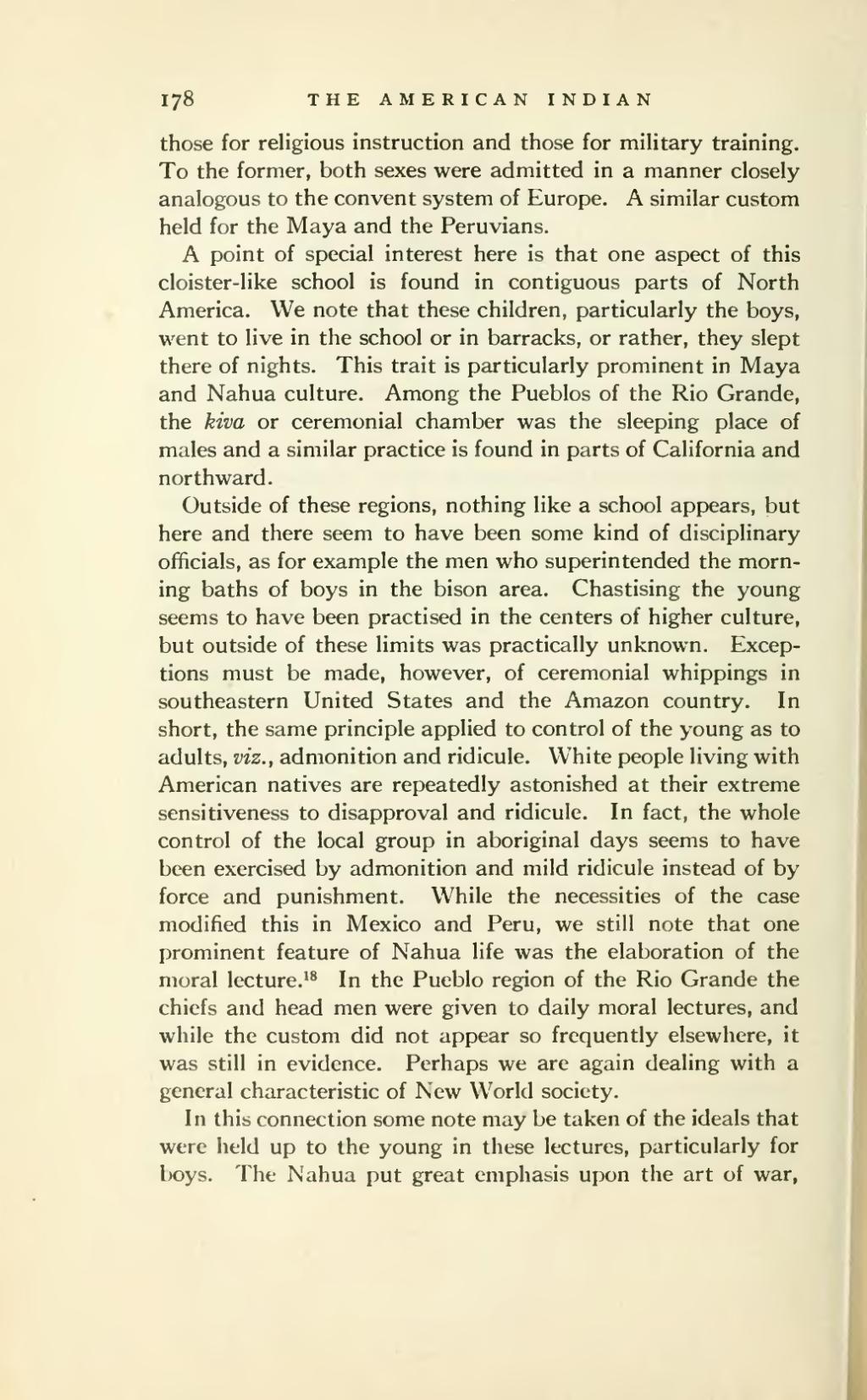those for religious instruction and those for military training. To the former, both sexes were admitted in a manner closely analogous to the convent system of Europe. A similar custom held for the Maya and the Peruvians.
A point of special interest here is that one aspect of this cloister-like school is found in contiguous parts of North America. We note that these children, particularly the boys, went to live in the school or in barracks, or rather, they slept there of nights. This trait is particularly prominent in Maya and Nahua culture. Among the Pueblos of the Rio Grande, the kiva or ceremonial chamber was the sleeping place of males and a similar practice is found in parts of California and northward.
Outside of these regions, nothing like a school appears, but here and there seem to have been some kind of disciplinary officials, as for example the men who superintended the morning baths of boys in the bison area. Chastising the young seems to have been practised in the centers of higher culture, but outside of these limits was practically unknown. Exceptions must be made, however, of ceremonial whippings in southeastern United States and the Amazon country. In short, the same principle applied to control of the young as to adults, viz., admonition and ridicule. White people living with American natives are repeatedly astonished at their extreme sensitiveness to disapproval and ridicule. In fact, the whole control of the local group in aboriginal days seems to have been exercised by admonition and mild ridicule instead of by force and punishment. While the necessities of the case modified this in Mexico and Peru, we still note that one prominent feature of Nahua life was the elaboration of the moral lecture.[1] In the Pueblo region of the Rio Grande the chiefs and head men were given to daily moral lectures, and while the custom did not appear so frequently elsewhere, it was still in evidence. Perhaps we are again dealing with a general characteristic of New World society.
In this connection some note may be taken of the ideals that were held up to the young in these lectures, particularly for boys. The Nahua put great emphasis upon the art of war,
- ↑ Barnes, E. and M.S., 1896. I; Sahagun, 1880. I.
